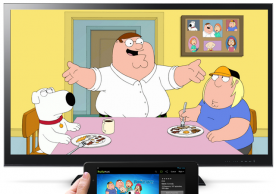FCC Eases Restrictions For In-Flight Internet Use, Halves Time Required For Approval
Alexandra Burlacu email: a.burlacu@mobilenapps.com
The FCC is setting up a standard approval process for onboard systems that use satellites to make it easier to use Internet services on planes.
Airlines currently have to go through a lengthy process to get in-flight Internet service established. Since 2001, the Federal Communications Commission (FCC) has approved some satellite-based Internet systems for airplanes - Earth Stations Aboard Aircraft (ESAA) - on an ad-hoc basis.
For now, an airline must get the FCC's permission to utilize the satellite-delivered airwaves that bring Wi-Fi to the aircraft, as well as an approval from the Federal Aviation Agency (FAA).
On Friday, Dec. 28, the FCC announced that it has formalized ESAA as a licensed application, which should halve the time required to get services approved, according to the agency. The new application process aims to allow airlines to get licensing more easily.
Critics of the current process claim that all the lengthy hassle involved in obtaining licensing for in-flight wireless Internet is the cause for its limited availability. Now, FCC's Chairman Julius Genachowski promised that once the application process is in place, the amount of time for an airline to get in-flight Internet will be reduced by half.
The FAA requires in-flight wireless Internet to be thoroughly tested for any potential navigation/ piloting interference. According to the Washington Post, the FAA acknowledged that the FCC's application process will indeed accelerate the process and reduce the time it takes to get an in-flight Wi-Fi system in place on planes. The FAA, however, did not specify anything pertaining to its own requirements and involvement.
In-flight Internet access is typically delivered in an airplane's cabin via Wi-Fi, but that access requires a wireless link outside the plane. While some services make that link available via special 3G cellular towers in the ground, others choose to exchange their data over satellites. Satellite-based in-flight Wi-Fi provider Row44, for instance, lists Southwest Airlines and Allegiant Air as customers on its Web site.
Under the new rules, all airlines need to do to implement onboard ESAA systems, is to test the technology, ensure that it meets FCC standards and doesn't interfere with any aircraft systems, and get FAA's approval, said the FCC. In addition to quicker deployments, this process could also result in more competition among in-flight Internet systems.
The announced changes come as the FAA has been reviewing regulations about the use of certain devices such as e-readers, that do not interfere with the safe operation of an aircraft. As Internet and all sorts of gadgets are gaining an increasingly stronger hold of society, both airlines and government agencies are seeing themselves forced to reconsider their terms and policies and adjust to current trends and necessities.
"Whether traveling for work or leisure, Americans increasingly expect broadband access everywhere they go," the FCC acknowledged recently. Easing regulations for in-flight Internet use is an important first step in adapting to modern-day necessities.
most read
more stories from What's Hot
-
Grand Theft Auto Online (GTA Online) launch issues: Rockstar details bug fix status
Rockstar Games has acknowledged the most common GTA Online launch issues and detailed the bug fix status for each problem it's currently working on.
ernest hamilton -
Target announces Brigthspot prepaid mobile service to debut on Oct. 6
Target has announced its new prepaid mobile service, Brightspot, which will debut on Sunday, Oct. 6.
ernest hamilton -
Hulu Plus now works with Google’s Chromecast streaming dongle
Hulu has added support for Google's Chromecast streaming dongle, allowing Hulu Plus users to 'cast' video directly to Chromecast.
ernest hamilton -
Grand Theft Auto (GTA) Online finally goes live
The much-awaited Grand Theft Auto (GTA) Online mode has finally gone live, unfolding a whole interconnected universe.
ernest hamilton -
BlackBerry blames $935 million hit on the BlackBerry Z10 – Q2 fiscal results are not pretty
BlackBerry has posted its Q2 fiscal results and blames a $935 million hit on 'Z10 Inventory Charge'
ernest hamilton -
Android KitKat contest reaches India with a chance to win the new Nexus 7 (2013)
The KitKat contest has now reached India, bringing promotional packages with the chance to win a new Nexus 7 (2013).
ernest hamilton -
Google Talk (Gchat) messages reach wrong recipients – Careful what you say now
Google Talk has been sending messages to the wrong recipients, raising some serious privacy concerns.
ernest hamilton -
Grand Theft Auto V (GTA 5) makes whopping $800M on launch day, dethroning Call of Duty: Black Ops 2
Grand Theft Auto V publisher Take-Two has announced that the new GTA 5 made a whopping $800 million on launch day, breaking the record previously set by Call of Duty: Black Ops 2.
ernest hamilton












